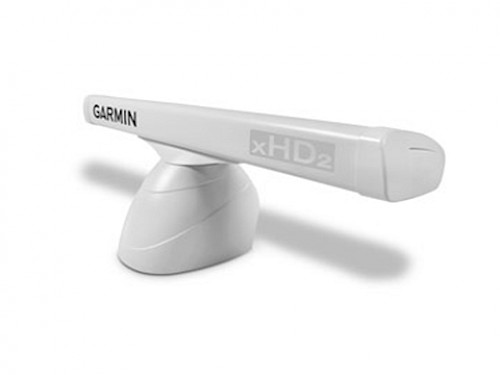
Is Radar on Your Radar?
A radio detection and ranging (RADAR) system on your boat provides line-of-sight target detection in low or no visibility situations. Radar is a great navigation tool but there are a few different options and doing your homework will save you money. The main considerations are the type of radar, range, power consumption, antenna size and how you use your boat.
There are two types of radar, pulse and broadband. Pulse emits a pulsing signal from a rotating arm on the antenna called an array. This can be an open array, like a navy or commercial ship, where the radar arm can be seen or a closed array often called a radome. Broadband sends out a continuous signal so it receives and transmits in the same instant, unlike pulse units, which transmit and then go through an internal change to receive. The larger the wattage of the array, the better target separation you will get.
When considering range, pulse radar is better at longer distances and broadband has better short range resolution. If you are concerned with power consumption then you would choose broadband which has lower power consumption than pulse radar.
What is the best place to install radar? The best location to install a radar antenna is the highest point on a power boat with an unobstructed 360 degree view. It’s worth emphasizing, avoid mounting the radar antenna near metal structures (e.g. mast or tower) as it will produce shadows or blind spots. As an added bonus, many manufacturers are using an identical mounting pattern to simplify upgrades.
Another consideration might be esthetics, the radar array should match the size and style of your boat. If you are talking to a reseller or authorized installer, it is often helpful to bring a picture of your boat for mounting options.
It is also important to match the right radar to the right display. The radar and the MFD need to be from the same manufacturer and also be technologically compatible. For instance, an older analog radar might not work with a newer MFD that interconnects to a digital (e.g. Ethernet) radar. If you think you may add radar to your system at a later date, ensure that the MFD you are purchasing is radar compatible.
Over the past few years, we have seen an increase in the number of boaters who are installing broadband radar. Unlike conventional pulse radar, which does not show close-range detail and tends to merge multiple targets into single groups, broadband radar delivers clutter-free detail from mid-range to extremely close-in targets. Broadband is ideal for power-conscious sail boaters or fishing vessels that troll as low speed and therefore low alternator output. With its low power requirement, broadband radar produces an immediate, accurate on-screen image without warm-up, thereby eliminating the battery-draining standby mode of traditional pulse radars.
Installing two radar? A recent PYS installation was for an owner who wanted two radar systems. One for offshore use and the other for inshore and to serve as a backup or to be left on at anchor. The first radar, that the client chose, was the Garmin GMR 2524 xHD2 4 foot open array radar and pedestal. The second radar system we installed was the Garmin GMR Fantom 24 radome. The low power consumption, instant turn on and no delay start up, made this the perfect radar for inshore navigation and anchoring. It also features a mini-automatic radar plotting aid (MARPA), which tracks up to ten selected targets, helping the owner keep track of other vessels and avoid collisions. Both units include dual radar support, which provides redundancy and the ability for each chartplotter on the boat to select data from either radar source.
If you aren't ready for a full radar installation or are considering changing boats, the Furuno 1st Watch Wireless Radar might be an option. You simply mount the antenna, plug in the power cord and download the app. It is easy to use and can be accessed by two iOS devices simultaneously. However, we don't believe it is a direct replacement for traditional radar because it cannot be integrated with your existing multi-function display. Also, smart devices are not designed for a marine application and do not fair very well in the rain, as such they should not be your only means of navigation.
Weather in the Pacific Northwest can change very quickly and radar can be a life-saver. We always encourage our clients to use their radar every time they boat, even on a clear day. Not only to enhance situational awareness but it is important to become familiar with the different targets on the screen before you really have to.
About the author: Jeff Cote is the owner of Pacific Yacht Systems, a full service shop delivering marine electrical and navigation solutions for recreational boats. Visit their website and blog for info and articles on marine electrical systems, projects and more: www.pysystems.ca.
Related Content






 $1,789.99
$1,789.99 $1,263.00
$1,263.00
























